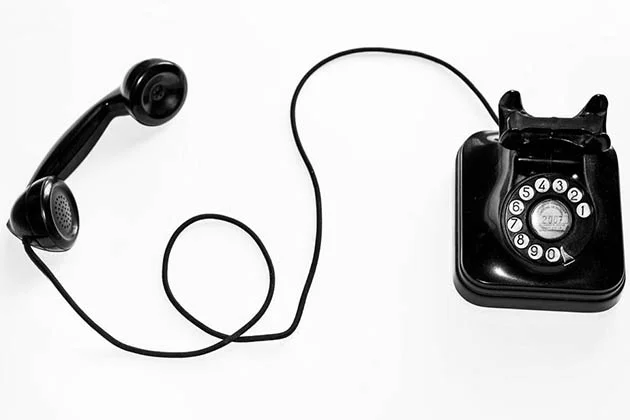Businesses always find themselves having to collect customer data. This process usually attracts two main challenges.
One is collecting the data, and the second is validating it. While data like age and names might be easier to gather and validate, others like email addresses and phone numbers could be challenging.
Data validation involves checking the accuracy and quality of users’ information collected for business purposes. One of the most effective ways to validate phone numbers is through JavaScript. This article explains JavaScript and how to validate a phone number with it.
What is JavaScript?
JavaScript is a programming or scripting language that allows users to implement complex features on web pages, such as displaying timely content, interactive maps, animated 2D/3D graphics, etc. It is also a lightweight, interpreted programming language designed to create network-centric applications.
Imagine three layers in a standard web technology cake. JavaScript is the third layer, while the remaining two are HTML and CSS. HTML is Hypertext Markup Language, and it is used to structure and give meaning to web content.
Also, HTML allows web users to create sections, define paragraphs, structure links using elements, tags, etc., and embed images and videos on the web page. HTML is useful for web development, Internet navigation, and web documentation.
On the other hand, CSS stands for Cascading Style Sheets. It is a style sheet language used to describe the presentation of documents written in a markup language like HTML. Also, CSS is used to apply styling to HTML content such as background colors, fonts, etc.
Compared to HTML and CSS, JavaScript is more difficult to understand. However, using JavaScript comes with several advantages, such as:
- It helps to add extra functionality to your website or web page
- JavaScript helps to increase the interactivity and usability of the webpage
- With JavaScript, you can save server traffic by validating user input before sending it to the server
- It provides easy-to-use and rich features on the web page
- JavaScript helps to provide additional data security by validating user data and input
These three, HTML, CSS, and JavaScript, are the cornerstones of the world wide web. They work together to produce excellent websites and help validate data such as phone numbers.
A guide from AbstractAPI on how to validate a phone number in JavaScript will give you more insight.
Author Bio:
Lydia Iseh is a writer with years of experience in writing SEO content that provides value to the reader. As someone who believes in the power of SEO to transform businesses, she enjoys being part of the process that helps websites rank high on search engines.
How to validate a phone number in JavaScript
The following are ways to validate a phone number using JavaScript.
● Validate phone numbers using JavaScript RegEx
You can validate a phone number using JavaScript RegEx. This stands for JavaScript Regular Expressions and it refers to a sequence of characters that forms a search pattern. When validating phone numbers, this is the JavaScript RegEx you will use:
/^\(?(\d{3})\)?[- ]?(\d{3})[- ]?(\d{4})$/
This is the breakdown of the above:
- /^\(? shows that the phone number might start with an open parenthesis
- Then you have (\d{3}) where you will enter three digits for valid formats. If the phone number doesn’t have parentheses, the number should start with these three digits.
- \)? is essential when you want to include a close parenthesis. Once again, if there are no parentheses, you do not need this pattern.
- [- ]? The phone number string may or may not contain a hyphen. If there is a hyphen, it is usually after the parenthesis or the first three digits, e.g., (123)- or 123-.
- (\d{3}) After the hyphen, the phone number should contain another three digits. The number can look like this (123)-456 or 123-456. Also, the number may not include a hyphen or parentheses, e.g., 123456.
- [- ]? lets you include an optional hyphen at the end of the next three digits, for instance, 123456-, (123)-456-, or 123-456-.
- (\d{4})$/ This is the final part of the sequence which ends with four digits. For example, you could have (123)-456-7890, 123-456-7890, or 123456-7890
Additionally, this is a function for validating a phone number:
function validatePhoneNumber(input_str) {
var re = /^\(?(\d{3})\)?[- ]?(\d{3})[- ]?(\d{4})$/;
When validating phone numbers, note that there are various formats for users to write their numbers. With the above function, you can validate phone numbers in any form. For instance, you can have numbers like:
- (123) 456-7890
- (123)456-7890
- 123-456-7890
- 1234567890
Another function you can use to validate a 10-digit phone number does not include commas, spaces, punctuations, or + sign in front of the number. This function will remove all non-digits and permit only the phone numbers with ten digits.
Example:
function phonenumber(inputtxt)
{
var phoneno = /^\d{10}$/;
if((inputtxt.value.match(phoneno))
{
return true;
}
else
{
alert(“message”);
return false;
}
}
● Validate phone numbers using JavaScript RegEx and HTML
Another way to validate phone numbers with JavaScript is by combining JavaScript RegEx with HTML. There are a few steps to follow when using this method.
- First, create an HTML file. After creating the file, add these lines:
div class=”p-4″
form id=”myform”
div
label for=”myform_phone” Phone: /label
input type=”text” id=”myform_phone” name=”phone”
div id=”phone_error” class=”error hidden” Please enter a valid phone number /div
/div
div class=”mt-2″
button type=”submit” Submit
/button>
/div
/form
/div
- After doing the above, create a CSS file and insert the following code:
.error
{
color: red;
size: 80%
}
.hidden
{
display:none
}
- The third step is creating a JavaScript file and adding these lines:
function validatePhoneNumber(input_str) {
var re = /^\(?(\d{3})\)?[- ]?(\d{3})[- ]?(\d{4})$/;
return re.test(input_str);
}
function validateForm(event) {
var phone = document.getElementById(‘myform_phone’).value;
if (!validatePhoneNumber(phone)) {
document.getElementById(‘phone_error’).classList.remove(‘hidden’);
} else {
document.getElementById(‘phone_error’).classList.add(‘hidden’);
alert(“validation success”)
}
event.preventDefault();
}
document.getElementById(‘myform’).addEventListener(‘submit’, validateForm);
The above output would show a box where you can insert the phone number for validation. Once you insert the number, click “submit.” If you input a phone number with the correct format, e.g., (123) 456-7890, you will get an alert stating “validation success,” meaning the number is valid.
Using these two effective methods to validate your clients’ phone numbers in JavaScript will save your business from the risk of scams and data breaches and cut down on time and money spent.
Conclusion
Validating users’ data ensures you get the correct information needed for your business. This article discussed how to validate a phone number using JavaScript. By validating your phone digits, you will protect your organization from fraud.













